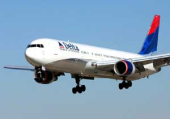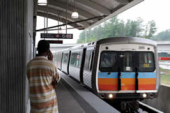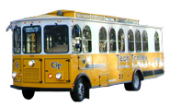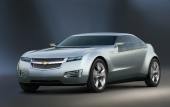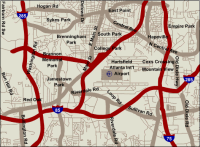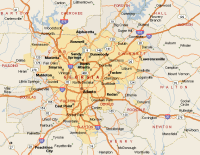
Conference Location

Location
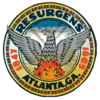 Atlanta is the capital and the largest city in the U.S. state of Georgia, with a population of 519,145, and the core city of the ninth most populous United States metropolitan area, at 5,278,904, with a combined statistical area population of 5,626,400. The Atlanta metropolitan area is the fastest growing area in the nation since 2000. Atlanta sits atop a ridge south of the Chattahoochee River. Atlanta has the highest average elevation of any major city east of Denver.
Atlanta is the capital and the largest city in the U.S. state of Georgia, with a population of 519,145, and the core city of the ninth most populous United States metropolitan area, at 5,278,904, with a combined statistical area population of 5,626,400. The Atlanta metropolitan area is the fastest growing area in the nation since 2000. Atlanta sits atop a ridge south of the Chattahoochee River. Atlanta has the highest average elevation of any major city east of Denver.
History
|
The land comprising the city of Atlanta was once an American Indian village called Standing Peachtree. The land that became the Atlanta area was sold by the Cherokee and Creeks to white settlers in 1822, with the first area settlement being Decatur. Soon, an informal trading post sprang up as the first white settlement, called Thrashersville. |
|
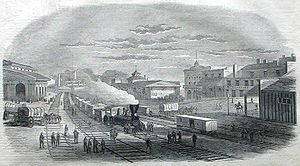
|
During the American Civil War, Atlanta served as an important railroad and military supply hub. Thought to be relatively safe from Union forces early in the war, Atlanta rapidly became a concentration point for the Confederate quartermasters and logistics experts, and warehouses were filled with food, forage, supplies, ammunition, clothing and other war materiel critical to the Confederate armies operating in the Western Theater. |
|
The Atlanta Rolling Mill, established before the war, was significantly expanded and provided a major source for armor plating for Confederate Navy ironclads, including the CSS Virginia. It also refurbished railroad tracks. A large number of machine shops, foundries, and other industrial concerns were soon established in Atlanta, and the population swelled to nearly 22,000 as workers arrived for these new factories and warehouses. In 1864, the city became the target of a major Union invasion. The area now covered by Atlanta was the scene of several battles, including the Battle of Peachtree Creek, the Battle of Atlanta, and the Battle of Ezra Church. On September 1, 1864, Confederate General John Bell Hood evacuated Atlanta after a four-month siege mounted by Union General William T. Sherman and ordered all public buildings and possible Confederate assets destroyed. The next day, Mayor James Calhoun surrendered the city, and on September 7 Sherman ordered the civilian population to evacuate. He then ordered Atlanta burned to the ground on November 11 in preparation for his march south, though he spared the city's churches and hospitals. |
|
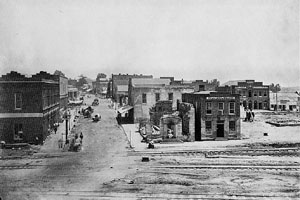
|
Federal soldiers continued to occupy Atlanta for the rest of the war. With the Confederacy's dwindling resources and military strength, the Confederate army was never in a position to retake the city. Periodic cavalry raids continued on Union supply lines in the general vicinity for some time.The fall of Atlanta was a critical point in the Civil War, giving the North more confidence, and (along with the victories at Mobile Bay and Winchester) leading to the re-election of President Abraham Lincoln and the eventual surrender of the Confederacy. |
|
The rebuilding of the city was gradual. From 1867 until 1888, U.S. Army soldiers occupied McPherson Barracks in southwest Atlanta to ensure Reconstruction era reforms. To help the newly freed slaves, the Freedmen's Bureau worked in tandem with a number of freedmen's aid organizations, especially the American Missionary Association. In 1868, Atlanta became the fifth city to serve as the state capital. Henry W. Grady, the editor of the Atlanta Constitution, promoted the city to investors as a city of the "New South", one built on a modern economy, less reliant on agriculture. However, as Atlanta grew, ethnic and racial tensions mounted. The Atlanta Race Riot of 1906 left at least 27 dead and over 70 injured. |
|
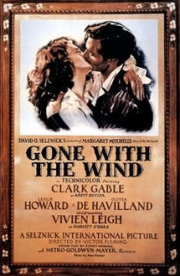
|
On December 15, 1939, Atlanta hosted the premiere of Gone With the Wind, the movie based on Atlanta-born Margaret Mitchell's best-selling novel. Stars Clark Gable, Vivien Leigh, and Olivia de Haviland attended the gala, which was held at Loew's Grand Theatre. During World War II, manufacturing such as the Bell Aircraft factory in the suburb of Marietta helped boost the city's population and economy. |
|
In the wake of the landmark U.S. Supreme Court decision Brown v. Board of Education, which helped usher in the Civil Rights Movement, and so in the 1960s, Atlanta was a major organizing center of the Civil Rights Movement, with Dr. Martin Luther King and students from Atlanta's historically black colleges and universities playing major roles in the movement's leadership. Two of the most important civil rights organizations -- Southern Christian Leadership Conference and Student Nonviolent Coordinating Committee -- had their national headquarters in Atlanta. |
|
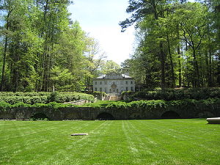
|
In 1990, Atlanta was selected as the site for the 1996 Summer Olympics. Following the announcement, Atlanta undertook several major construction projects to improve the city's parks, sports facilities, and transportation. Atlanta became the third American city to host the Summer Olympics. Contemporary Atlanta is sometimes considered a poster child for cities worldwide experiencing rapid growth and urban sprawl. However, the city has recently been commended by bodies such as the Environmental Protection Agency for its eco-friendly policies. |
|
Atlanta features the world's largest indoor aquarium, the Georgia Aquarium, which officially opened to the public on November 23, 2005. The new World of Coca-Cola, opened adjacent to the Aquarium in May 2007, features the history of the world-famous soft drink brand and provides visitors the opportunity to taste different Coca-Cola products from around the world. Underground Atlanta, a historic shopping and entertainment complex lies under the streets of downtown Atlanta. Atlantic Station, a huge new urban renewal project on the northwestern edge of Midtown Atlanta, officially opened in October 2005. |
|
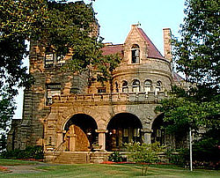
|
Atlanta hosts a variety of museums on subjects ranging from history to fine arts, natural history, and beverages. Museums and attractions in the city include the Atlanta History Center; the Carter Center; the Martin Luther King, Jr. National Historic Site; the Atlanta Cyclorama and Civil War Museum; historic house museum Rhodes Hall; and the Margaret Mitchell House and Museum. Children's museums include The Fernbank Science Center and Imagine It! Children's Museum of Atlanta. |
Parts of this text were copied from 
Conference Venue
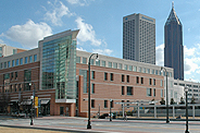
|
The NASTEC'2009 conference itself will be held at the The meeting rooms will be signposted, while the registration desk will be located in the hallway in front of the rooms. |
How to reach Atlanta and the Conference Location 
By Plane
|
When arriving by plane you will be arriving at the Hartsfield-Jackson Airport. As it is quite a daunting airport, size-wise, you can go to this link or alternatively this one, for the maps of the airport terminals. From the airport you can take either a shuttle, bus, train, rental car, limousine, executive car or taxi cab to the city centre. |
By Train |
You can get to the host hotel from the airport by taxi or by the MARTA (Metropolitan Atlanta Rapid Transit Authority), Atlanta's mass-transit system. Once inside the airport, signs pointing to the MARTA are everywhere. Trains run basically every 5 to 10 minutes from 05:30 (5:30am) to 01:00 (1:00am). The trip to the hotel takes under 20 minutes. Get off at Midtown (N4 on the map-at the intersection of Fifth and Spring streets in Technology Square, right off Interstate 85/75. |
By Bus and Trolley |
As stated above from the airport you can also take the MARTA Bus to Atlanta city centre. Once in the centre of Atlanta you can travel back and forth using the Tech Trolley. The free Tech Trolley runs every four minutes from 5:45 a.m. until 11:30 p.m. Monday through Friday, from 10 a.m. to 6 p.m. Saturday, and from 3 to 11 p.m. Sunday. The free trolley runs along Fifth Street, with a smaller loop for the Technology Square/Midtown MARTA station. |
By Taxi |
As stated above, taxi cabs can be taken at the airport. |
By Car
|
From the Atlanta Airport or south Atlanta (Interstate 85/75 north): Take Interstate 85/75 north to the Spring/West Peachtree streets exit (Number 249D). Stay in the left lane as you exit on to Linden Avenue. Continue straight for .1 mile on Linden Avenue and turn left onto West Peachtree Street. Travel .3 mile and turn left onto Fifth Street. Go one block and turn left on to Spring Street (Barnes & Noble at Georgia Tech Bookstore on your left and the Georgia Tech Hotel on your right). Proceed a half block and turn right at the next light into the parking deck. Park on the second level (blue level). From there, enter the Georgia Tech Global Learning Center. |
Atlanta Maps
BEWARE

When you bring your PC or other equipment to the USA be aware that different plugs are needed.
- That your VISA requirements are OK. See the Fees Page for more information.

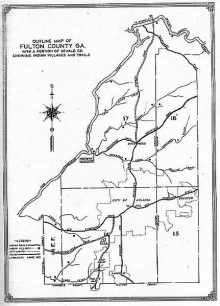
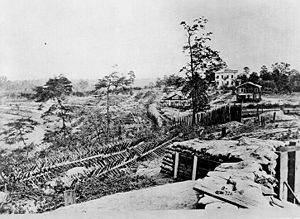
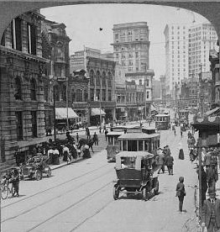
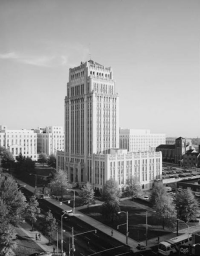

 Tel: +1.404-385-6203
Tel: +1.404-385-6203 Fax: +1.404-385-1408
Fax: +1.404-385-1408 Email:
Email: 